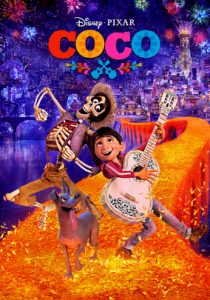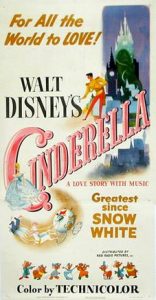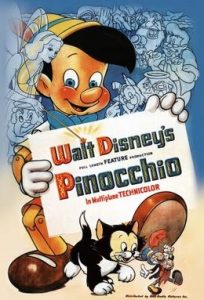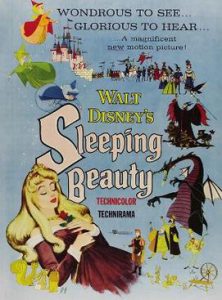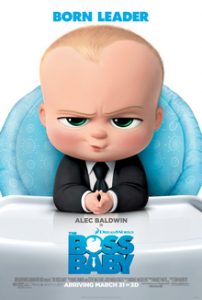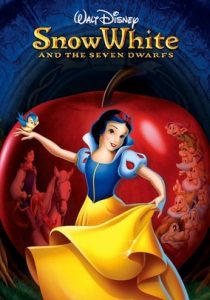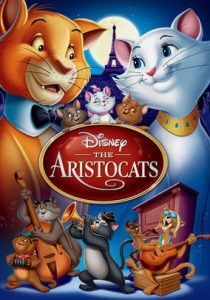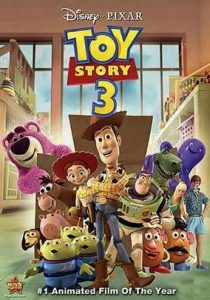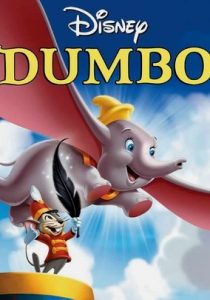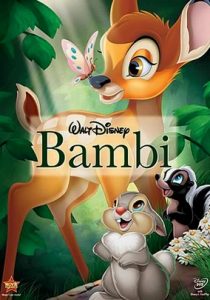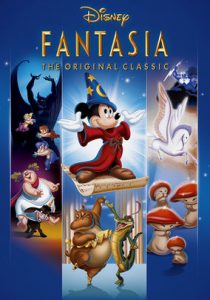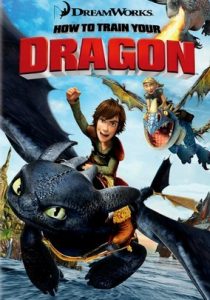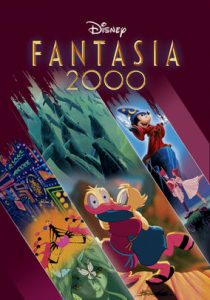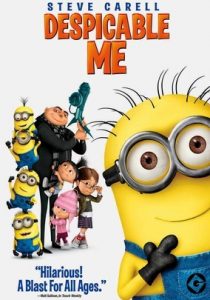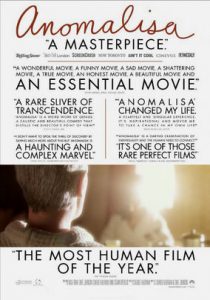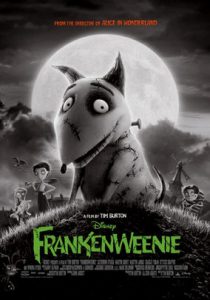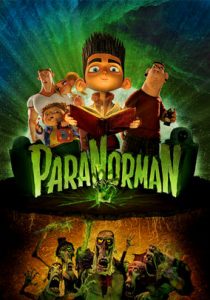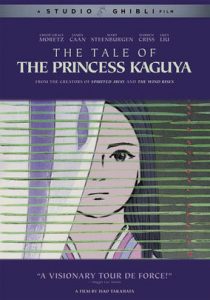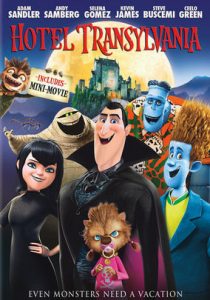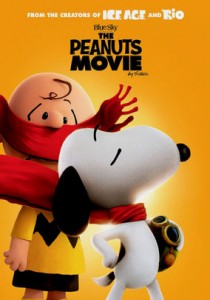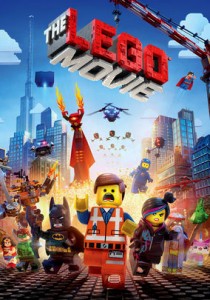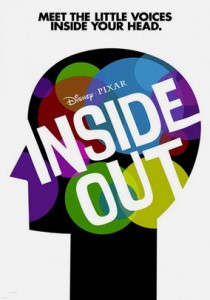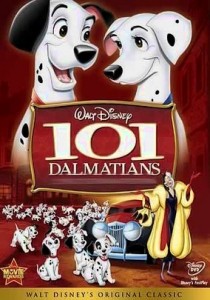Coco-2017
Director-Lee Unkrich
Voices-Anthony Gonzalez, Benjamin Bratt
Scott’s Review #737
Reviewed April 4, 2018
Grade: B+
Winner of the 2017 Best Animated Feature Academy Award, Coco is an exuberant and colorful affair filled with marvelous lights and a Mexican cultural infusion that serves the film well, making it feel robust with diversity and inclusion.
The overall theme of family, traditions, and musical celebration is apparent and makes for good razzle-dazzle with lots of upbeat song and dance.
Mixed in is a lovely inter-generational theme, where older folks are respected, something all too lacking in today’s real world.
Miguel Rivera is a twelve-year-old boy living in Mexico with his extended family, including his elderly great-grandmother, Coco- sadly suffering from intermittent dementia.
Through flashbacks, we learn that Coco’s father, (Miguel’s great-great-grandfather), was an aspiring musician who abandoned the family for greener pastures. Subsequently, all music has been banned by the Rivera clan in favor of a modest shoe-making business.
As Miguel realizes his passion for music, he comes into conflict with his family, who have other aspirations for the young man. Miguel embarks on a fantastic journey to the magical and somewhat frightening land of his deceased ancestors, coinciding with the festive Day of the Dead celebration, a tradition of Mexican culture.
There he realizes the true nature of his great-great-grandfather’s sudden departure.
Coco is a film that can really be enjoyed by all members of the family and is structured in just that way. The blatant use of multiple generations holds great appeal for blending the family unit.
Pixar successfully sets all the right elements in place for a successful film, and the well-written story only adds layers. The film is quite mainstream, yet appealing to the masses.
Perhaps very young viewers may become frightened by some of the skeleton-laced faces of Miguel’s ancestors in the other world where he visits, but these images are somewhat tame and mixed with vibrant colors and wonderful production numbers.
These images are undoubtedly meant to entertain rather than be scary and the creatures possess a friendly vibe.
Having viewed the film on an airplane traveling cross-country (admittedly not the best way to watch a film), I was entranced by the lovely and touching musical number, “Remember Me (Lullaby)”, so much so that I was moved to tears right on the plane.
How’s that for effectiveness?
The emotional level reached via this song impressed me immensely about Coco, even when the story occasionally is secondary to the visual or musical elements.
In fact, for me, the story began to lag slightly until the aforementioned big musical number came into play. The song really kicked the action into high gear in an emotional way, and I became more enamored with the characters and the connections they had to one another.
The love that Miguel and his relatives share became clearer to me and the conclusion is fine and satisfactory.
A slight miss to the film, corrected mid-way through, is the bratty and entitled nature to Miguel. Heaving sighs when he does not get his way, this seems more apparent early on and was quite the turn-off- at first, I did not care for the character, yet I knew I was supposed to.
Thankfully, the character becomes, naturally, the hero of the film and ultimately a sweet, likable character. I began to ponder, “Is that what kids are really like these days”?
Pixar does it again as they create a family-friendly experience with a positive, yet non-cliched message of belonging, forgiveness, and the importance of family connections, that feels fresh.
In current times of divisiveness, especially with immigration and other cultures being attacked, how appropriate to experience a feel-good, yet not contrived project.
Oscar Nominations: Best Original Song-“Remember Me” (won), Best Animated Feature Film (won)
